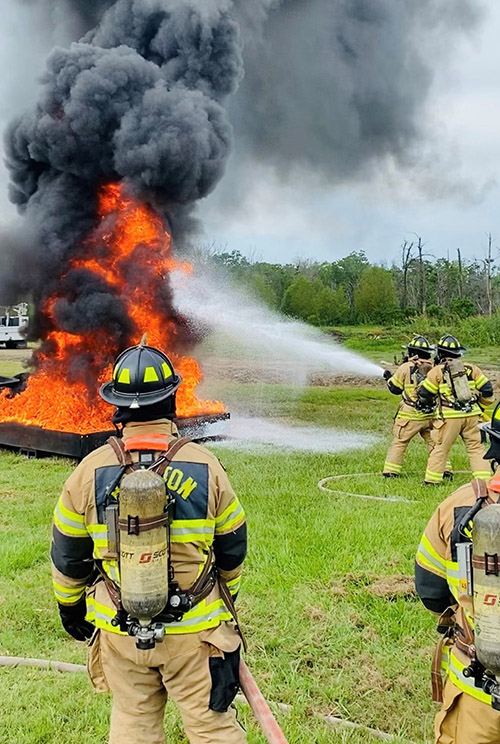A PRACTICAL & SAFE METHOD FOR EXTINGUISHING LiB FIRES
On average, an EV fire ranges in temperature from 2000-4900°F making the use of water inefficient.
In a world where Lithium-ion Batteries (LiB) and electric vehicles (EV) are becoming a mainstay in all homes and communities, firefighters need to prepare for hotter and more difficult fires to extinguish. With high temperatures, the oxygen will separate from the water molecule and will then become a fuel for the fire.
In a report by Envista Forensic, fire ignition can cause the cathode of the battery to catch fire. The burning lithium creates a metal fire that reaches temperatures of 2,000°C / 3632°F. Attempting to douse the fire with water is inadvisable since this could lead to a hydrogen gas explosion!
Our solution is a multiclass foam concentrate, formulated to fight LiB fires. Pyrocool is also being used as a replacement for AFFF foam. This has been awarded the EPA Presidential Green Chemistry Award.
With the unique ability of our Exothermic Fire Foam to rapidly absorb heat and cool a fire, cell-to-cell temperature transfer in lithium batteries is contained, thus mitigating a very dangerous aspect of fires in an electric vehicle: thermal runaway.
Learn More:

Formulated for Use In:
- CLASS A FIRES
- CLASS B FIRES
- CLASS D FIRES
- PRESSURIZED 3-DIMENSIONAL FIRES
- EV FIR
Currently, extinguishment of an EV fire can consume up to 30,000 gallons of water (on average, a fire truck only carries between 500 – 1,000 gallons of water). This makes Intelagard fire suppression systems an essential tool when attacking LiB fires.
Intelagard CAFS will expand the limited amount of water carried on a truck, eliminating the need to call in a support tank or go through an expensive drafting procedure.
With their incorporated Enviroshield® technology, Intelagard systems can take the 500 gallons of water on the truck and convert it into 17,500 gallons of fire-fighting foam. Using less water drastically reduces the amount of hazardous waste runoff and minimizes any damage that may be caused by water.